Imagine that you lead a team. There are many ways to encourage people to do their best.
One approach is to invite them to share the kinds of work they like doing and also their preferred working styles. It is then to enable people to make their best contributions to the team.
You can obviously use this approach in one-to-one meetings. If you feel it would be useful, however, you can invite people to do the exercises individually and then share these in a group setting. This can help people to appreciate each person’s strengths and preferred working style.
This article looks at the second approach. There are several points worth bearing in mind when doing the exercise.
The exercise is most effective when each person in the team wants to deliver professional performances. You can then help them to make their contribution to the team’s picture of success.
The exercise is not about working in a group setting with individuals who are delivering poor performances. You can hold those kinds of discussions elsewhere in a one-to-one meeting.
So let’s explore how the exercises can help people in the team to do superb work.
You can invite each person to clarify
the work they like doing and
how they like to be encouraged
You can start by asking each individual to complete the following exercises on how they work best. Explain that the team will then meet together to explore how to build on people’s strengths.
Explain that the sharing will be done in a positive atmosphere. It will not be about getting people to ‘change’.
Several points are worth bearing in mind when introducing the exercise.
Ask people to be as honest as possible. There are no good or bad working styles, for example, there are just consequences.
Ask them to be as specific as possible. When in doubt, they are to describe things in behavioural terms.
Talk them through each part of the exercises, perhaps giving examples from your own style to bring it to life.
Here is the first set of exercises that you can invite people to do. There is an introduction to each exercise.
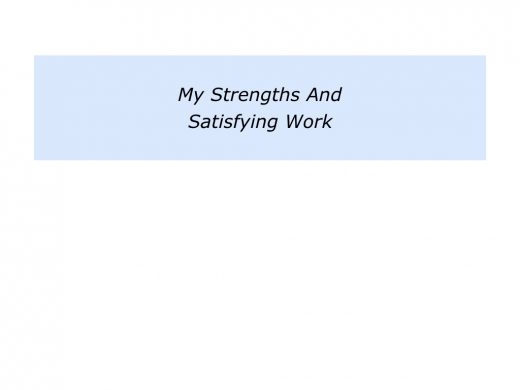
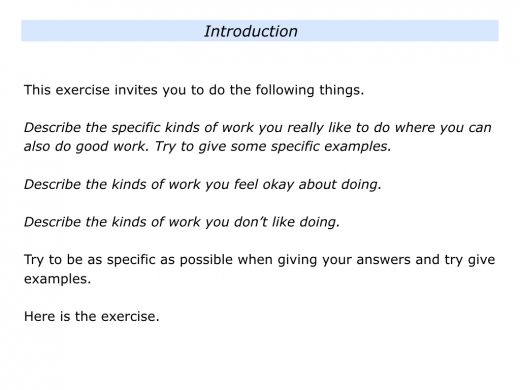
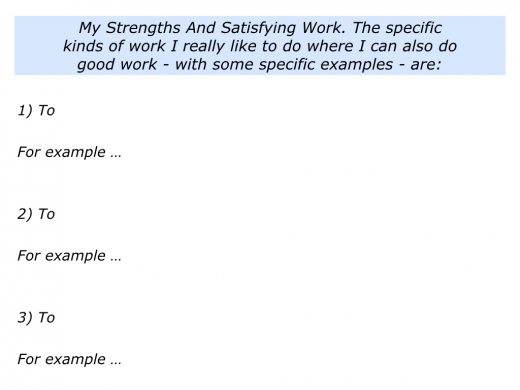
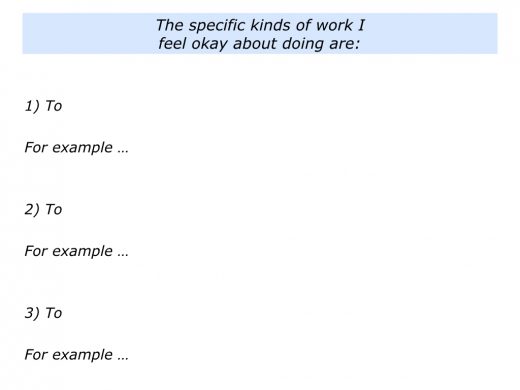
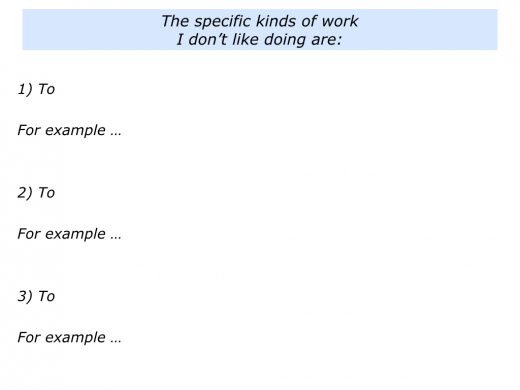
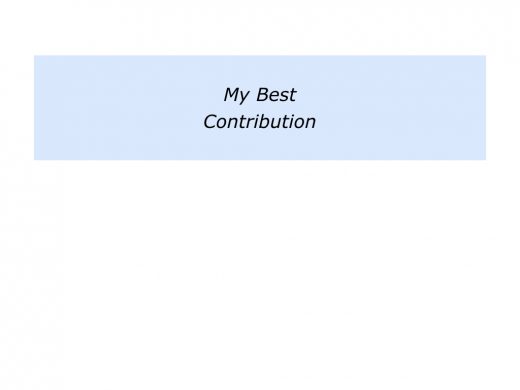
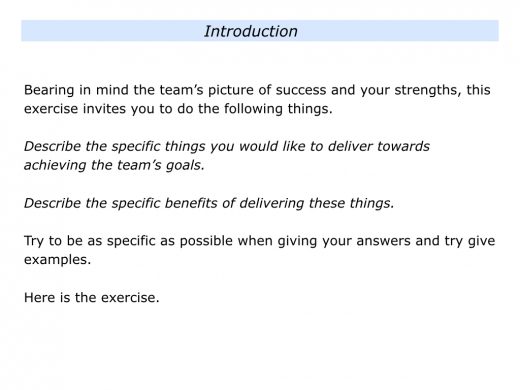
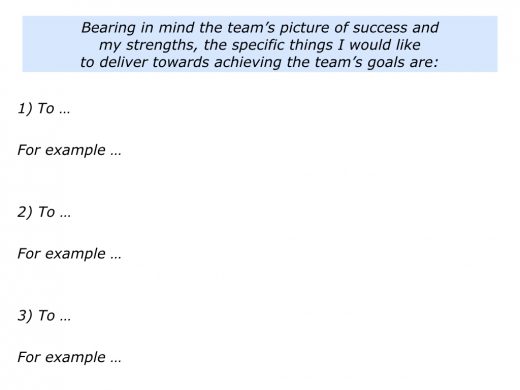
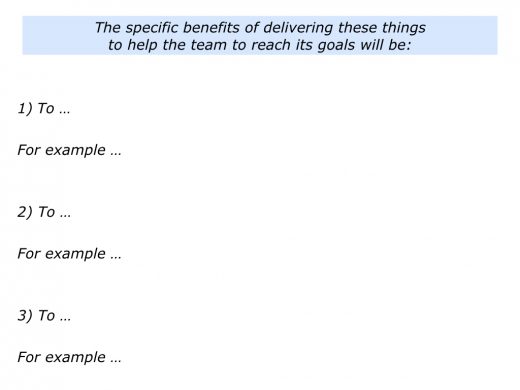
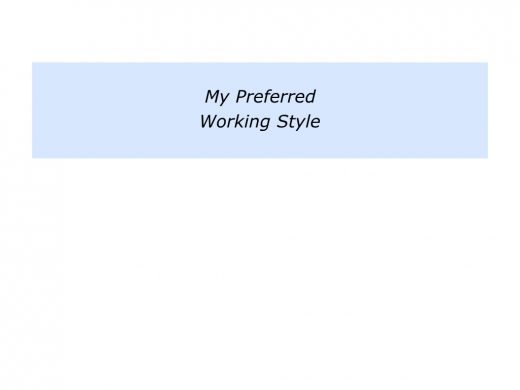
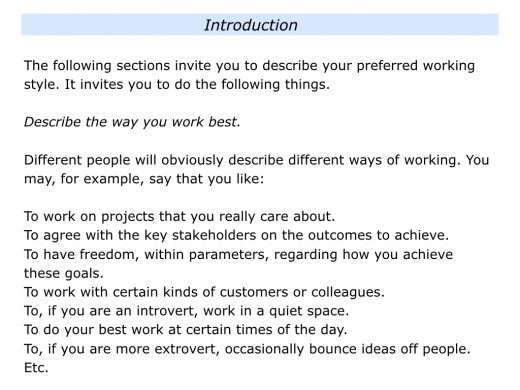
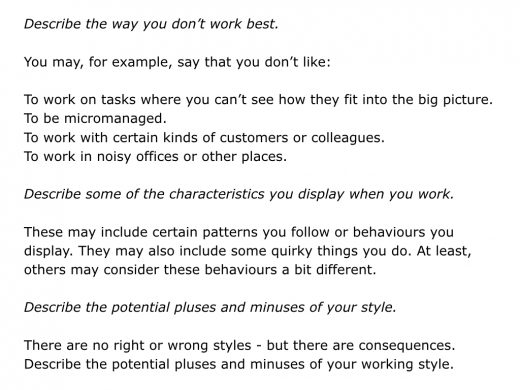
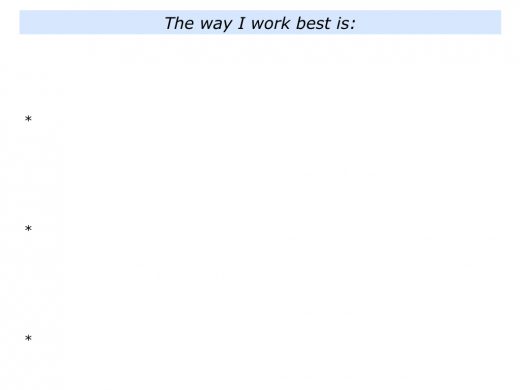
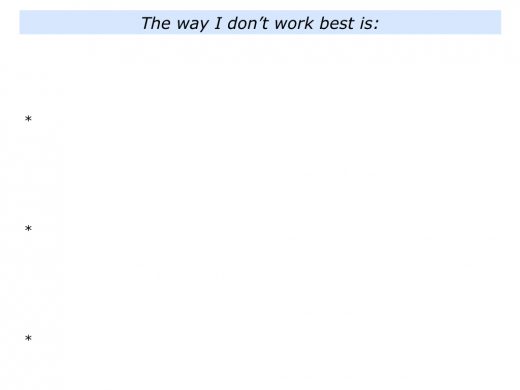
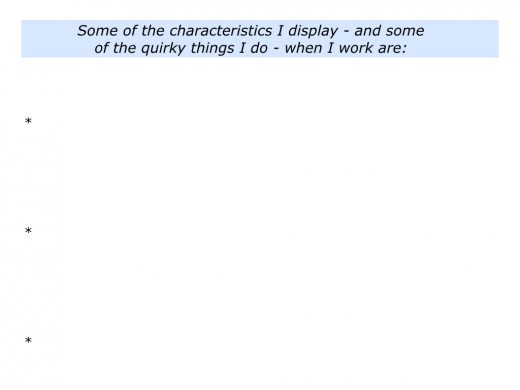
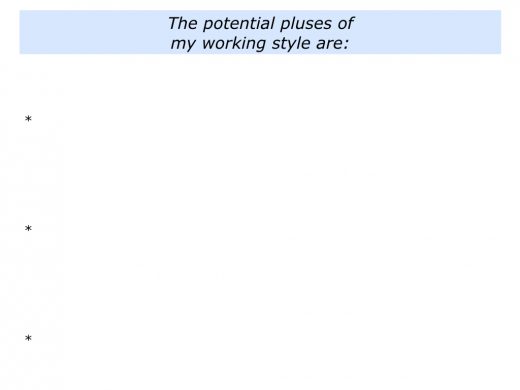
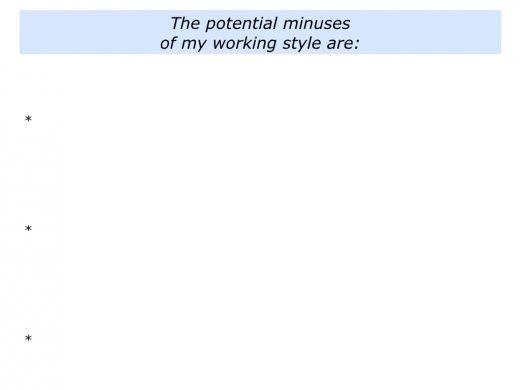
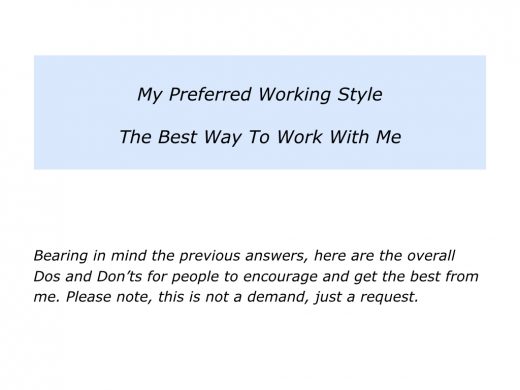
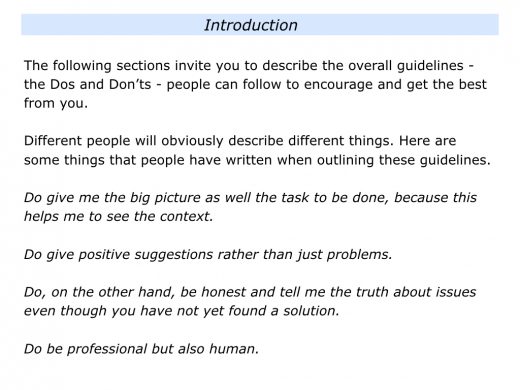
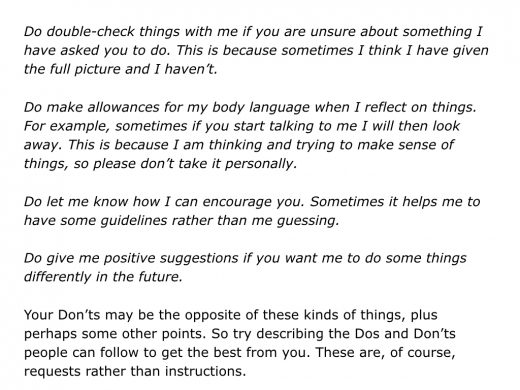
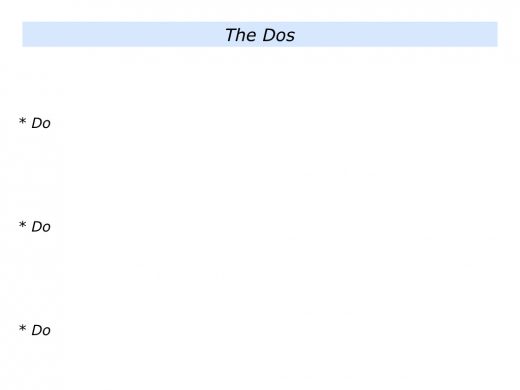
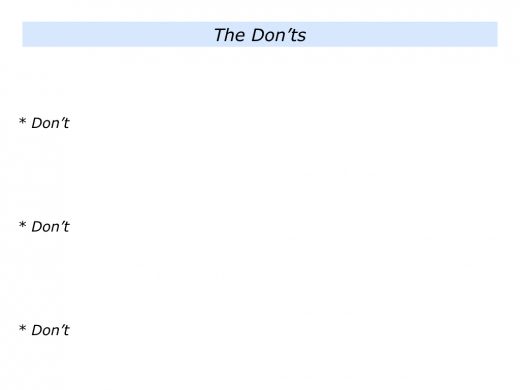
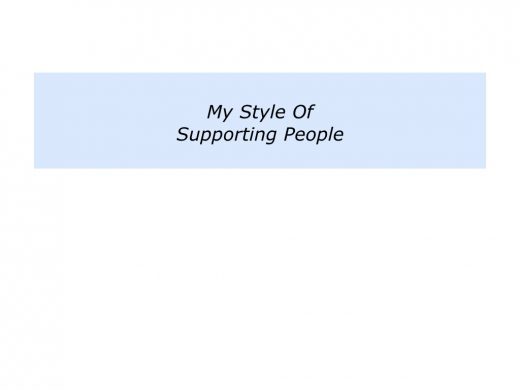
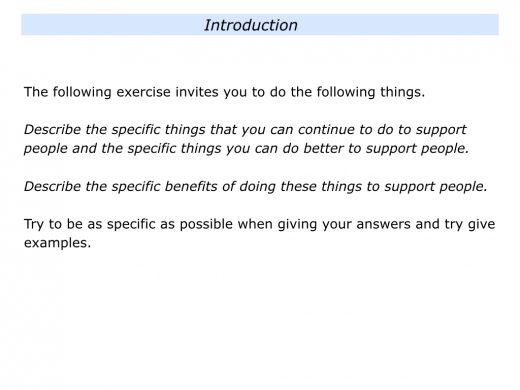
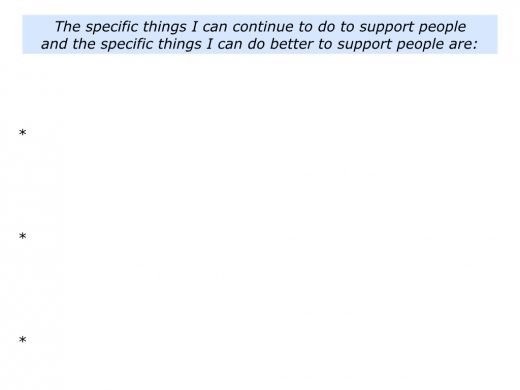
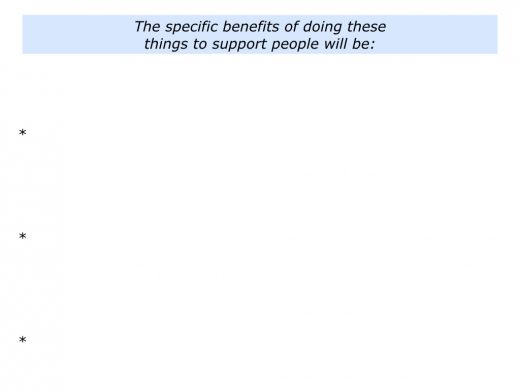
You can facilitate a session
in which people share
their answers to the exercises
Gather the team together. Create an informal atmosphere in which people feel able to share their working style. You may then wish to follow these guidelines.
Explain the rules.
Each person will have 15 minutes or more to share their answers to the exercises. The aim is to understand the person. It is not to get them to change. People can ask questions when the team member presents, but mainly for information.
Invite each person to spend 15 minutes or more sharing their answers to the exercises.
At first sight 15 minutes seems a long time, but it can often take longer. Providing people have done the exercises properly – and the group asks questions for information – it may take up to 30 minutes per person.
You can model the kind of questions to ask by listening to the person and asking them to give examples. For instance:
“You say that you enjoy working with certain kinds of clients. What are the personality characteristics of those people? Do they have anything in common?”
“You say that sometimes you need your own space. How can people tell when you would like to be alone? Do you become quiet, grumpy or give clear messages?”
Providing you have created a positive atmosphere, you will find that people open-up and are willing to be honest. You are asking questions to find out more about them as individuals. You simply want to know more about how to capitalise on their strengths and style.
You can meet with each person to
clarify their best contribution towards
achieving the team’s picture of success
There are many ways to encourage people to do their best. One approach is to invite them to share their preferred ways of working. You can then agree on their best contributions towards achieving the team’s goals.
Below are the sections that each person can send to you ahead of having a one-to-one meeting. During the meeting you can make clear contracts about their agreed goals for the year.
Here are the exercises. These take a long time to do, but many people find these helpful in making their best contributions to the team. You will adapt the exercise in your own way, of course, to continue to build a superb team.


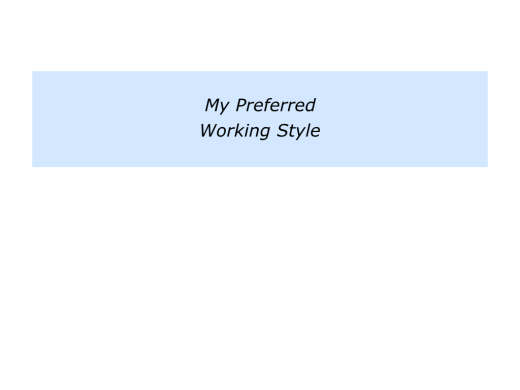
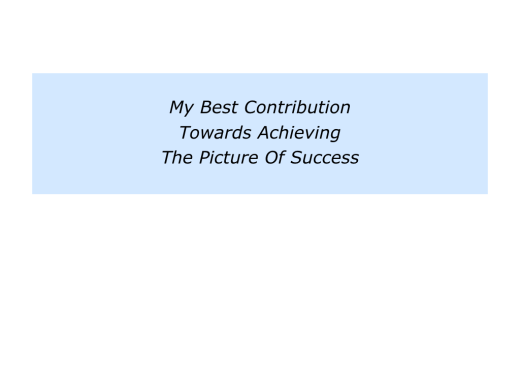
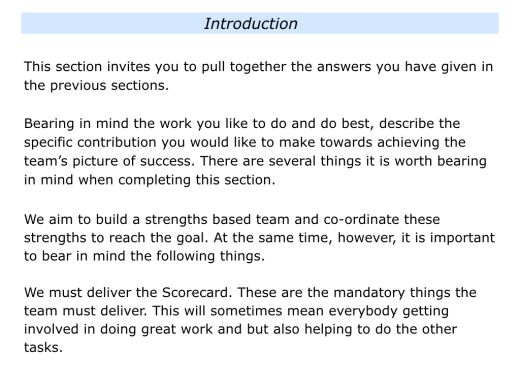
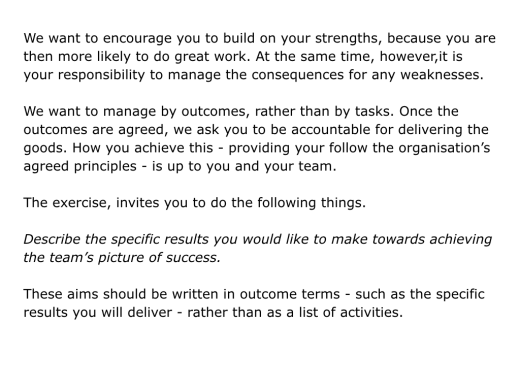
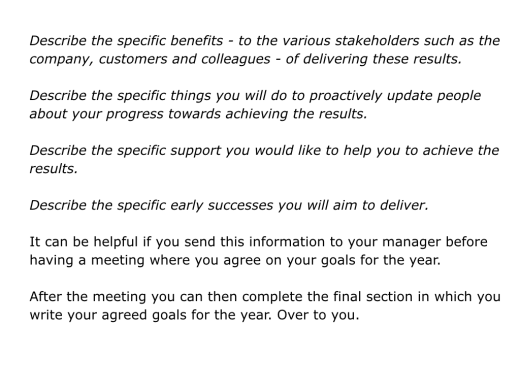
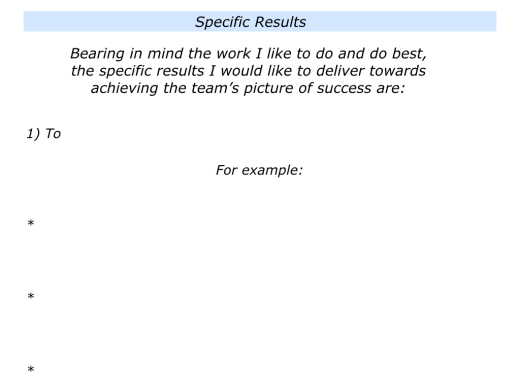


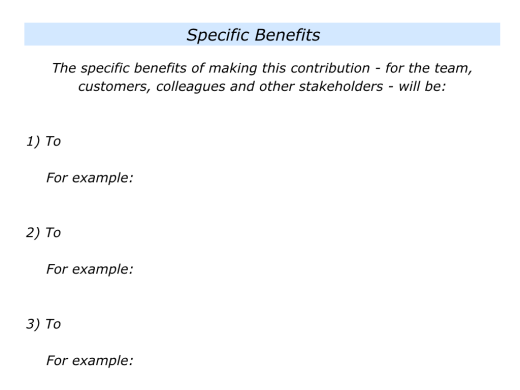
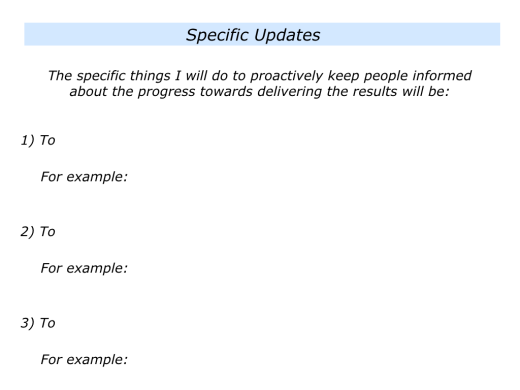
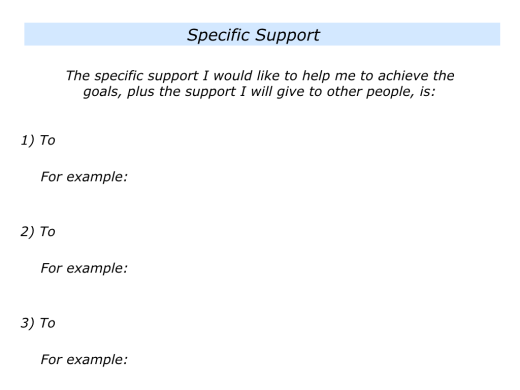
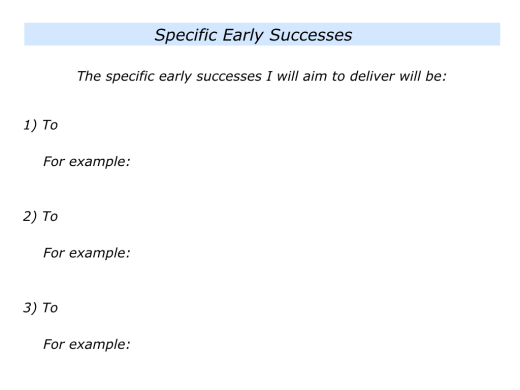
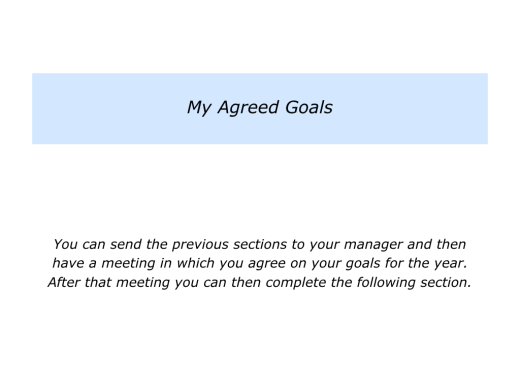
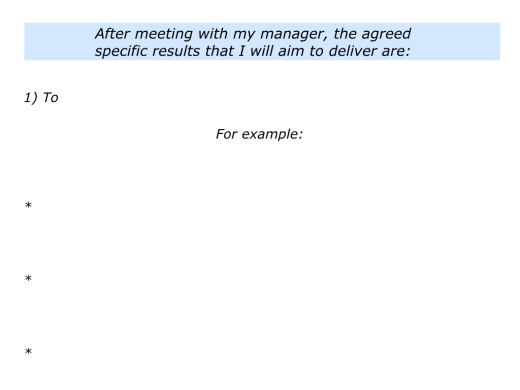






[…] My Preferred Working Style […]